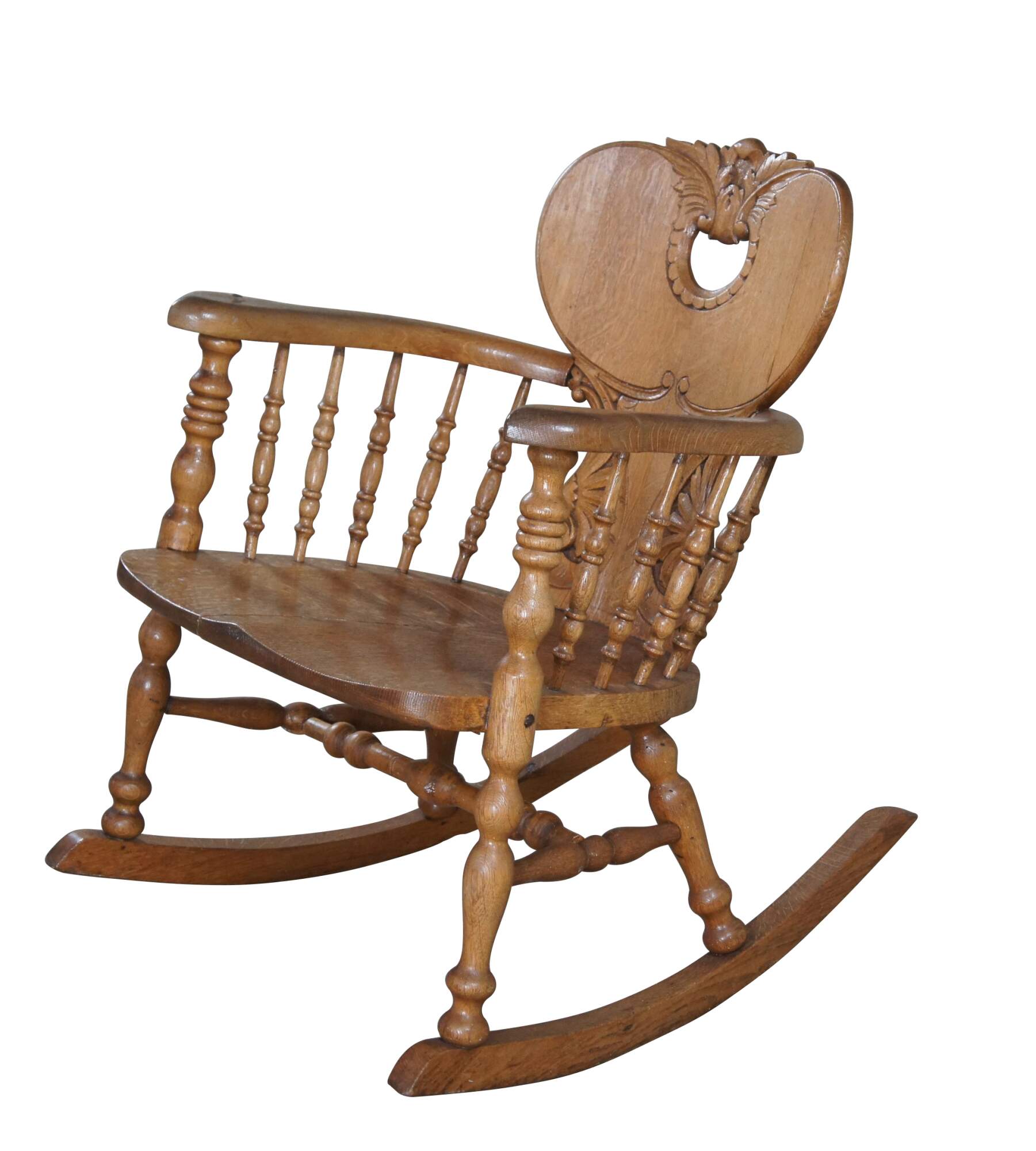
Shipping:
Free Shipping Included
Delivery:
Estimated 2-15 Business Days
Payments:
Credit Card, Check, Cash, PayPal, Apple Pay, Venmo
Returns:
30 Days 100% Money Back Guarantee, Buyer Pays Return Shipping
Description
Late Victorian Rocking Chair. Attributed to Stomps Burkhardt of Dayton, Ohio. Made from quartersawn oak with a heart shaped back, carved and pierced with acanthus foliate and "C" scrolled splat. The chair has a barrel back form with turned spindle supports. Features a contoured seat and turned stretchers.
In 1860, Gustav Stomps established the firm G. Stomps Brothers in partnership with a brother, Joseph, and Martin Barbec. Richard P. Burkhardt purchased Barbec's interest on November 2, 1869, and Gustav Stomps bought out his brother. The company manufactured chairs by machinery.
In 1890, the firm became Stomps-Burkhardt Company. Located in Dayton, Ohio
“The chair factory was located downtown, at the corner of First and Canal streets. It’s Patterson Boulevard and First Street now. They had buildings on both the east and west sides of the canal. A third man started with them, but dropped out, and one of Gustave’s son-in-laws, Richard Burkhardt, bought out his share.”
Through the years, various members of the Stomps and Burkhardt families worked at the company, best known for its chairs, which could be transported along the canal throughout Ohio, Illinois, Pennsylvania, Indiana and New York, and later on to Canada and Mexico.
“Each year, they’d put out what they called a ‘Roman’ chair with arms, always very regal looking with carvings,” said Grismer. “They made one for Holy Rosary Church with a cross, but others had what look like monsters’ faces or just interesting one-of-a-kind carvings.”
When Gustave Stomps died in 1890, his brother had already opened his own furniture factory, and the sons of Burkhardt took over the chair factory until it closed in 1928. By 1900, the forests surrounding downtown that supplied the sawmills had dwindled, and they had to travel to Kentucky for wood. In addition, the end of the canal days and 1913 flood had negative impacts on the business, adding to its downfall.
The business’ heyday spanned 1890-1900, when it employed 235 and had $250,000-$300,000 in annual sales. Special chairs were designed for the World Fair in 1893 and the Columbian Exposition in Chicago.
Condition
Good Condition with age and use related wear. Separation in seat board, glue residue along underside and past repair / split to rocker glider
Dimensions
24" x 30" x 32"h, seat 15.5"
You May Also Like